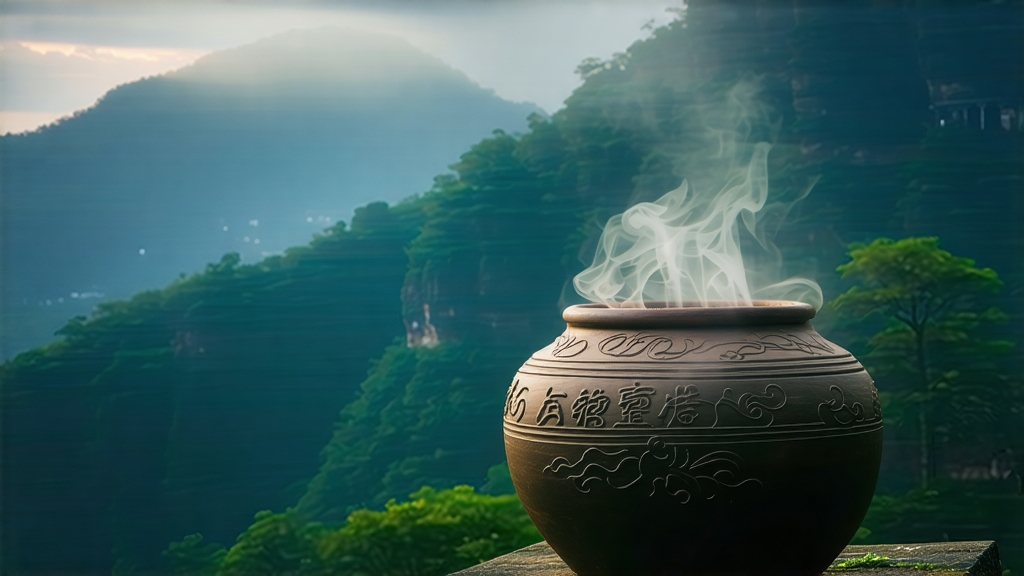
Liu Bao, literally “Six Forts,” is the name of a dark tea that even many Chinese city-dwellers have never tasted, yet it once fueled the caravans of the ancient Tea Horse Road and still ferments quietly in the sub-tropical mountains of southern Guangxi. To international drinkers who know only ripe pu-erh, Liu Bao offers a parallel universe of microbial alchemy: deeper earthiness, a signature betel-nut fragrance, and a liquor that glows like polished mahogany. This article invites you to step inside that universe—its 1,500-year history, its two distinct crafting styles, and the almost ritualistic way locals coax its flavors into a cup.
-
From Military Fort to Tea Port
During the Tang dynasty (618-907 CE), the Liu Bao basin belonged to Cangwu County, a strategic corridor between the Han heartland and the southern tribes. Six garrison forts guarded the mountain pass; tea grown around them was compressed for easy transport to the frontier garrisons. By the Ming era, the same route had become part of the Tea Horse Road, and Liu Bao leaves travelled 2,000 km on mule-back to Tibet and Indochina, bartered for warhorses and medicinal herbs. The tea’s ability to suppress dampness and aid digestion made it indispensable to horsemen living on butter and barley. In 1802 the Qing government listed Liu Bao as one of the “24 tribute teas” sent to the imperial court in Beijing, sealing its reputation. -
The Micro-climate That Bends Flavor
The core production zone is a 30-km radius around the small town of Liubao, Wuzhou City. The subtropical monsoon delivers 1,600 mm of rain annually; daytime heat hovers around 30 °C with 85 % humidity—ideal for the spontaneous fermentation that defines dark tea. The soil is lateritic, rich in iron and potassium, and drains quickly on the 35-degree slopes. Locals insist that the wild betel palm (Areca catechu) growing along the mountain streams imparts its aroma to the tea through shared airborne microbes, a claim modern metagenomic studies have begun to confirm: the dominant fungal genus in both betel husk and Liu Bao maocha is Aspergillus elegans. -
Two Families of Liu Bao
Traditional Liu Bao is classified by the vessel in which it is post-fermented:
• Basket Liu Bao (竹篓茶): After primary firing, 50 kg of semi-dry leaves are packed into cylindrical bamboo baskets lined with untreated kraft paper. The baskets are stacked in humid caves or specially built “fermentation rooms” where temperature is kept at 28–32 °C for 45–60 days. The bamboo breathes, allowing micro-aeration; the paper absorbs excess moisture. The result is a tea that marries earthy depth with a faint green-bamboo sweetness.
• Loose Liu Bao (散茶): A modern adaptation for urban markets. Leaves are piled in 1-ton stainless-steel trays and sprayed with a starter culture dominated by Blastobotrys adeninivorans, then kept at 40 °C for 20 days. The shorter cycle yields a cleaner cup, but purists say it lacks the “betel soul” of basket tea.
Within each family, grades are expressed by the picking standard: Gong Ting (bud only), Te Ji (one bud one leaf), Yi Ji (one bud two leaves), down to San Ji (fourth leaf). Age statements—three, five, ten, twenty years—are common, yet unlike pu-erh there is no “raw” Liu Bao; all leaves undergo the same wet-piling step, so the vintage reflects duration of further aging rather than a different initial process.
- Crafting the Darkness
The journey from fresh leaf to drinkable Liu Bao spans six meticulous stages:
a. Plucking: Dawn picking between Qingming and Guyu solar terms ensures high catechins and low fiber.
b. Wilting: 3–4 hours on bamboo trays under shade; 65 % moisture remains.
c. Kill-green: 5-minute tumble at 200 °C deactivates polyphenol oxidase but preserves fungal substrates.
d. Rolling: 40-minute light pressure to crack cell walls without breaking leaf integrity.
e. Pile-fermentation: The pivotal step. Leaves are